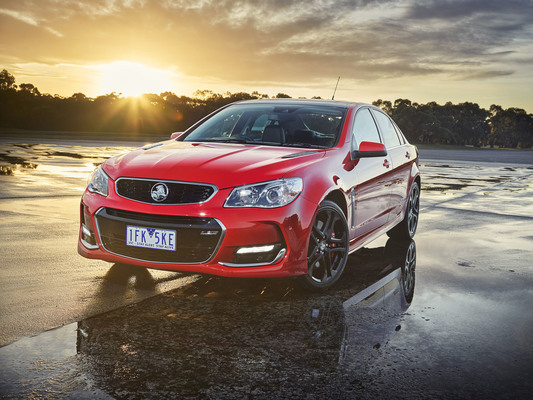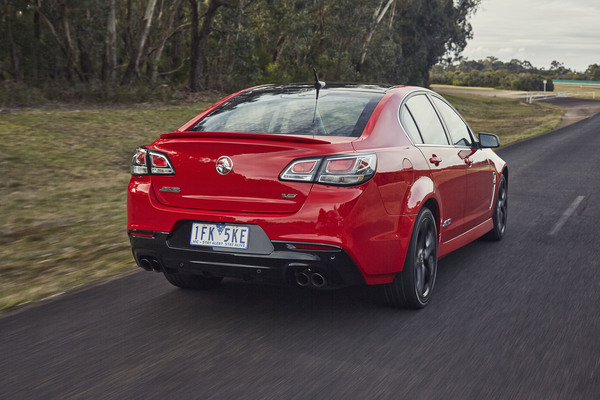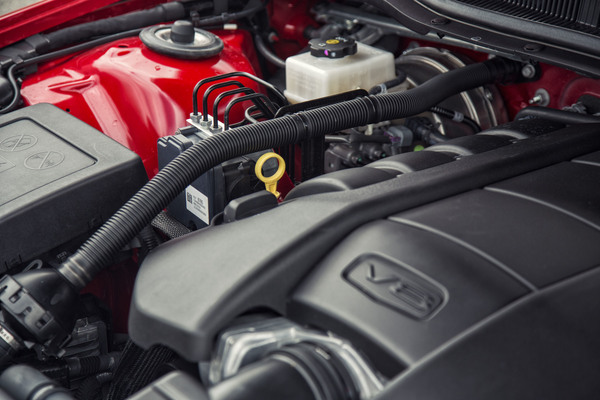By ALISTAIR KENNEDY
With the clock ticking down towards the end of local production Holden has released the Series II version of its VF Commodore.
Because the nameplate is set to continue as an import after the factory closes in 2017 Holden is aware of the importance of keeping Commodore up to date and so hasn’t ruled out another update sometime in 2016.
However it’s safe to say that this will be the final major change to the car that has been such a feature of the Australian automotive industry for the past 37 years and one that was our nation’s top-selling car for 15 straight years between 1996 and 2010.
With sales of the sportier Commodore variants (SV6, SS, SSV and SSV Redline) now approaching 60 per cent of total sales, it’s clear that Holden is looking to say farewell to its iconic range in style.
The biggest change with the Series II VF is the addition of the latest version of the Chevrolet LS3 6.2-litre V8 engine.
With 304 kW and 570 Nm it has significantly more power and torque than the 6.0-litre (270 kW / 530 Nm) Gen 4 V8 in the Series I VF.
Indeed, it is the most powerful non-HSV Commodore engine ever produced.
It’s also the fastest Commodore sprinter yet, capable of going from standstill to 100 km/h in just 4.9 seconds.
Fuel consumption from the flagship SSV Redline is listed at 11.8 litres per 100 km on the combined cycle.
We’ll provide our own test numbers, including a city / highway split, when we carry out our week-long test. CO2 emissions are shown at 292 grams per kilometre.
The heavily revised V8 is supported by upgraded FE3 rear sports suspension aimed at improving ride comfort without affecting handling.
The range-topping SSV Redline also comes with Brembo brakes front and rear.
While performance is paramount for owners of V8-powered cars, the sounds that they emit run a close second.
With the characteristic guttural growl steadily declining as modern engines become more refined it’s become necessary for engineers to intervene.
To achieve the type of sound required the Holden team has come up with the combination of a bi-modal exhaust system and a mechanical sound enhancer.
The bi-modal exhaust can be turned on and off through the touchscreen monitor.
To ensure that occupants of the car, and not just passers-by, get to enjoy the benefit of the enhanced sounds, Holden has developed a component called the Baillie Tip.
Named after the engineer who designed it, the late Dr David Baillie, it uses an aperture in the tailpipe to reverberate sound back through the exhaust and into the cabin.
Exterior design changes are relatively minor and are functional rather than cosmetic being there for improved aerodynamics and the additional cooling requirements of the more powerful engine.
There are air vents on either side of the bonnet to assist the release of hot air from the engine bay and also give the car a more aggressive look.
Large corner fascia ducts have been added to channel air away from the front of the car.
Other new features for VFII models from SV6 up include pushbutton engine start/stop, new design 18-inch alloy wheels (SV6 and SS), and LED taillights in the Sportwagon.
The SSV adds a colour head-up display and 19-inch alloys and optional performance brakes while the SSV Redline gets Brembo brakes and optional 20-inch forged wheels.
The Calais has heated front seats, 18-inch alloys with the front passenger now joining the driver in having an eight-way powered seat including memory settings.
The Calais V gets the choice of V6 or V8 engines and 19-inch alloys.
Holden invited a group of motoring journalists to the VF II launch in Adelaide, including a few who had attended the unveiling of the VB Commodore back in 1978.
With the entry-level SV6 effectively unchanged, the launch drive program was based almost exclusively on the new V8s.
The route included a delightful segment through the Adelaide Hills where the LS3s could selectively stretch their legs.
While the previous V8 VFs were far from sluggish, the extra 40 Nm of torque that comes in at the same 4400 rpm really sharpens up the thrust of the VFII.
Even when pushed relatively hard through some tight bends the car stayed well-balanced and stable.
The highlight of the VF II launch was a two-hour visit to the Collingrove Hillclimb in the Barossa Valley.
After Mount Panorama, Collingrove is the oldest continuously operating motor sport venue in Australia.
A throwback to the halcyon days of hillclimbing its bitumen track is just three metres wide for most of its 685-metre length with a series of tight, twisting turns as it climbs steeply to its peak of 61 metres.
Not the most obvious place to take a family size production sedan but Holden’s faith in its product was rewarded.
Despite its size the SSV Redline thundered up the steep hill and scampered through the sharp turns with the agility of a much smaller sportscar.
With future Commodores likely to take the European route and be powered by four-cylinder turbo-petrols, and naturally aspirated and turbo-petrol V6s these V8 VF Series II should prove popular not only with driving enthusiasts but also with more conservative Holden lovers.
At sub-$60,000 prices they offer excellent value and may well become collectable future classics.
To arrange a test drive contact Barry Bourke Holden, 755 Princes Highway, Berwick, on 9707 2222, or Cranbourne Holden, 217A South Gippsland Highway, Cranbourne, on 5995 4555.
Model range
Evoke 3.0-litre V6 sedan: $35,490 (automatic)
SV6 3.6-litre V6 sedan: $37,290 (manual), $39,490 (automatic)









